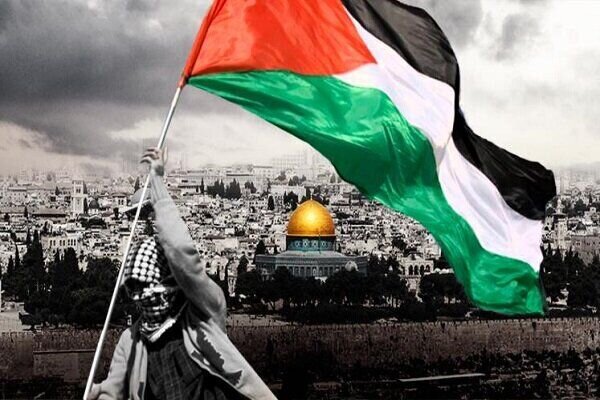The two-state solution… is a loss for the Palestinian cause.

 Hawraa al Massri:
Hawraa al Massri:
A proposal emerged to divide Palestine and establish a Palestinian state alongside a state for the entity (Israel), known as the two-state solution. This proposal received considerable support from the United Nations and some countries that saw it as the optimal solution to the Israeli-Palestinian conflict. In fact, the matter began after Britain announced its intention to end the mandate and hand over the Palestinian-Israeli issue to the United Nations, which in turn issued Partition Resolution No. 181. This resolution marked the beginning of what is known as the two-state solution, although it did not take the form of actual and official recognition until the signing of the Oslo Agreement in 1993.
Despite the UN resolution, it was never welcomed by the Arabs, especially at the beginning of the occupation, which was supported by the West, as the Arabs rejected any Zionist presence in the region.
“The Beginning of the Displacement and Killing of the Palestinian People”
What the entity did in terms of displacing and terrorizing the Palestinian population through Jewish militias, known as the Haganah, which were supported by Britain and the West, was the seizure of Palestinian lands and the expulsion of their residents. However, the matter did not stop at mere seizure; it extended to attempts to carry out ethnic cleansing of the Palestinian people to eliminate any voice or entity representing the Palestinian cause and people as a whole.
“The 1967 War and the Loss of Palestinian Lands”
Thanks to the power and support enjoyed by the entity, it later managed to impose its control over 78% of Palestine. The situation changed drastically after the 1967 war and the Arab defeat, which opened the way for the entity to occupy the remaining parts of Palestine, prompting the United Nations to issue Resolution No. 242, which called for a return to the pre-1967 borders, meaning Palestine would have only 22% of its land.
Despite all the proposals presented by the United Nations, which showed significant bias toward the Zionist entity, the occupation accepted none of these resolutions. It becomes clear that its goal was not peace, but rather to impose control over all of Palestine and eliminate what is called the Palestinian people.
It is worth noting that the stance has changed. While the occupation rejected recognition of the two-state solution, some Arab countries began to accept it under the pretext of bringing peace to the region. This reflects a radical shift in the Arab position, which has begun to evade the Palestinian cause. The question that arises, however, is: why do countries like Iran, Iraq, and others reject this resolution while the Gulf states and some of their allies accept it?
“Iran… The Largest Opponent of the Two-State Solution”
The Islamic Republic of Iran has long been one of the strongest opponents of the two-state solution, considering it a project that does not do justice to the Palestinian people. This rejection also stems from the fact that Tehran does not recognize the existence of the entity, so how could it approve a decision that establishes a Zionist state in the region?
Iran did not stop at rejecting this proposal and supporting the Palestinian cause through the formation of the Resistance Axis; it also proposed a plan based on general elections and a referendum among Christians, Muslims, and Jews in Palestine to choose a state representing all of them, rather than a single party imposing control over the others.
This reflects that Tehran considers the two-state solution merely a loss for the Palestinian cause, offering none of the rights demanded by the Palestinian people and instead serving the ambitions of the entity over Palestinian lands.
This point was emphasized by Imam Sayyid Ali Khamenei in his book “The General Referendum in Palestine,” where he outlined his views on the Palestinian issue, asserting that the only just solution for all parties is to establish a political system that respects all religions and individuals within Palestine.
This Iranian stance shows that Tehran deals with any international power that might affect the value and course of the Palestinian cause with great caution, unlike some Arab countries that have long clung to this resolution, prioritizing their interests with the occupation over any concern for the Palestinian cause and people as a whole.
“The Two-State Solution… Ink on Paper”
Ultimately, what is known as the two-state solution is merely an attempt to make the Zionist presence in the region appear natural and inevitable. The underlying truth is that the idea of dividing Palestine has always been and remains bound to paper, unimplementable, as long as there are those who remain committed to the Palestinian cause.







